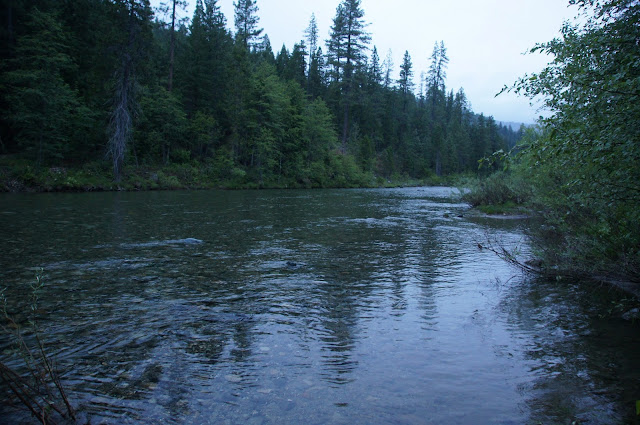Date: May 25, 2013
Place: The Trinity Alps, Trinity Center, California
Coordinates: 41.065365, -122.783185
Length: Both lakes in and out, about 4.5 miles.
Difficulty: Moderate to strenuous.
Getting to Boulder Lakes trailhead requires a 7-mile drive on unpaved dirt road. It is passable for non AWD cars but does have some challenging places along the way and requires careful and slow driving. It took us about an hour to get from the campsite to the trailhead.
This trail is within the Shasta-Trinity National Forest. The NF map is of too small a scale to be of any use in navigation. We had, in planning, acquired USGS topographic maps of the areas where we planned our hiking, and such was the map we used. The trail, as we found out, is obvious and well marked, and there was no need for any map consultation.
The trail is nice and wide in the beginning. There are many shrubs and bushes along the trail and most of them were in full bloom. This one I liked most: it looks like a little ornamented tree.
 |
| Ribes roezlii |
The Trinity Alps are carved from a mass of igneous rock that's different in origin from the coastal range. Weathering shaped it into ragged peaks that loom above the forest, threatening and alluring.
The chikas started the hike somewhat reluctantly, but got very excited when we arrived Boulder Lake. We had encountered there a group of people, one of which was busy fishing. He offered the chikas to try casting and they were very excited to do so.
 |
| Boulder Lake |
They did recommend us not to skip Little Boulder Lake though, so we walked back up on the trail and by the time we arrived at the branching of the trail to Little Boulder Lake the rain had ceased, to we took the advice and turned on that trail.
While the trail to Boulder Lake is relatively mild grade, going to Little Boulder Lake involves a steeper ascend. It didn't help the general mood of Papa Quail and the chikas when the rain returned, and stronger. We didn't bring any rain gear on the trail with us so I had to shove my camera down my shirt to protect it, taking it out only for quick shots.
 |
| Rain on Little Boulder Lake |
 |
| Little Boulder Lake |
And the blue sky appeared!
 |
| Manzanita sp. |
I didn't make it easy for them, though. There were so many beautiful flowers along the dirt road that I stopped the car frequently and got out to photograph them. I was particularly impressed by the Pacific Dogwood that reminded me of brides and wedding decorations:
 |
| Pacific Dogwood (Cornus nuttallii) |
It's even more beautiful from up close:

Ans the Beargrass, which lighted up the roadside with its incredible inflorescence torches:
 |
| Common Beargrass (Xerophyllum tenax) |
But one time it was Papa Quail who stopped the car. He saw a movement in the trees and went out to explore. It turned out to be a woodpecker of a species we've never encountered before:
 |
| Hairy Woodpecker |
So we didn't make it back to the campground too early after all. The campground, being in lower elevation, was completely dry. By the time we finished our dinner it was almost dark. Although the trail we did was not too challenging, we were all ready for the sack.











































